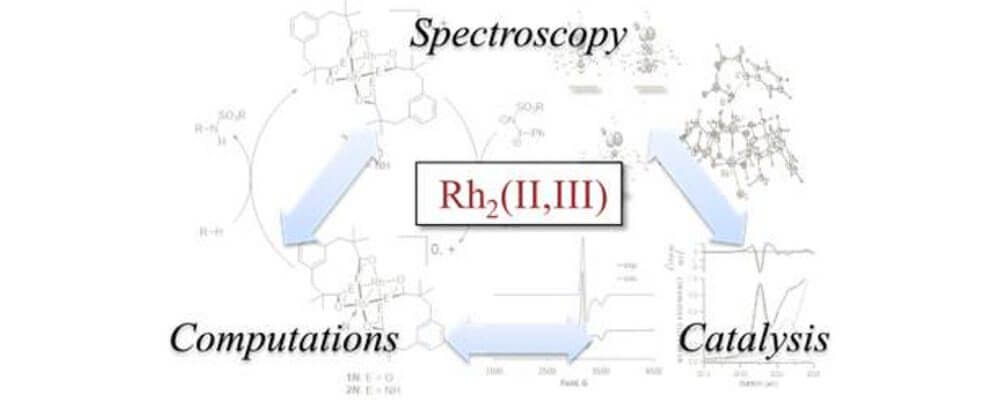Rh2(II,III) Catalysts with Chelating Carboxylate and Carboxamidate Supports: Electronic Structure and Nitrene Transfer Reactivity
A. Varela-Álvarez, T. Yang, H. Jennings, K. P. Kornecki, S. N. Macmillan, K. M. Lancaster, J. B. C. Mack, J. Du Bois, J. F. Berry, and D. G. Musaev
J. Am. Chem. Soc.,
2016, 138 (6), pp 2327-2341; 10.1021/jacs.5b12790

01/2016
C–H amination via nitrene transfer catalysis has the potential to be a transformative technology for synthetic chemistry and is a central science within the CCHF. Many of the leading catalysts for this chemistry are the dirhodium complexes that are based around a Rh(II)-Rh(II) bond.
This collaborative study from the Berry, Du Bois, Lancaster and Musaev groups brings together a panel of techniques to study the electronic factors at play in this transformation. Building upon previous studies from these groups a highly detailed analysis of the electronic structure of the catalyst, with close comparative studies between experimental and simulated findings.
Exploring the electronic nature of the nitrene-dirhodium complex this study outlines the differences between the doublet and quartet catalyst complexes, how this impacts whether the reaction proceeds through a concerted or stepwise pathway and the implications this has for the catalytic activity of different carboxylate and carboxamidate-based catalysts.
This thorough investigation of this system will inform the design of dirhodium (and other metal-based) paddlewheel complexes for nitrene and other C–H functionalization chemistry.